The Endless Night: Creating a Vampire Hunter D Tabletop RPG
I don’t know why one doesn’t exist yet, but here’s how I’d design a VHD RPG
In the desolate Frontier of year 12,090 A.D., humanity clings to existence in scattered villages while ancient vampire castles loom on distant hills….
The Legacy of Vampire Hunter D
The Vampire Hunter D saga began in 1983 when Japanese author Hideyuki Kikuchi published the first novel, simply titled "Vampire Hunter D." This tale of a mysterious dhampir protecting a young woman from an ancient vampire noble established the unique blend of gothic horror, post-apocalyptic “Dying Earth” science fiction, and western themes that would define the series. The novels were elevated by Yoshitaka Amano's hauntingly beautiful illustrations, giving D his iconic appearance. To be honest, I wouldn’t be discussing VHD if it wasn’t for Amano’s outsized contribution to the franchise. But ultimately it’s the original novels that I’m most interested in due to their extensive world-building.
The franchise expanded into a manga in 1983 and then animation with the 1985 anime film "Vampire Hunter D," directed by Toyou Ashida, which introduced Western audiences to the violent, unique world. In 2000, Yoshiaki Kawajiri’s "Vampire Hunter D: Bloodlust" arrived with modern animation and a deeper narrative, cementing D's status internationally.
Today, with over 56 main series novels published in Japan and many translated into English, Vampire Hunter D stands, in my opinion, as one of the most intriguing dark fantasy universes ever created. And I’d be remiss if I didn’t mention that you can listen to many of the original novels in dramatized audiobook format now (look for Vampire Hunter D by GraphicAudio). Each book is voice acted by a full professional cast, intriguing cinematic music and superbly done sound effects. The voice of narrator Scott McCormick can only be described as mesmerizing.
It's after listening to just five of these dozens of novels that I came to the conclusion that Kikuchi’s creation, his dying world in which Vampire Hunter D lives and fights, would be a perfect foundation for tabletop roleplaying.
Why a Vampire Hunter D TTRPG Would Be Extraordinary
Only five novels in at the time of this writing, I'm already stunned by the potential that the setting offers for tabletop roleplaying. The world of Vampire Hunter D presents a uniquely compelling framework for shared storytelling adventures:
1) Unique mixed setting: the setting exists at a fascinating intersection of genres—gothic horror meets post-apocalyptic science fiction meets western frontier adventure. Players could battle vampires with both swords and laser rifles, navigate ancient AI systems while dodging werewolves, or ride cybernetic horses across wastelands dotted with ghosts and demons.
2) Fascinating social structure: the social dynamics create instant adventure hooks. Frontier villages desperate for protection from monsters, ancient Noble vampire families playing deadly political games, the Capital's distant authority, all provide rich session and campaign opportunities.
3) Many, many monsters: the monsters and supernatural elements are quite diverse. Beyond traditional vampires, Kikuchi populated his world with dimension-ripping beasts, mutant creatures, cybernetic horrors, and bizarre entities that defy categorization—all perfect for keeping players interested, engaged and surprised.
4) Amano’s underlying aesthetic: Amano’s pairing with Kikuchi’s writing was a match made in heaven. Amano’s renditions of Vampire Hunter D are utterly captivating. He captures the melancholic beauty of D himself, and manga artist Saiko Takaki went a long way further in establishing the visual language of a dying world where ancient castles stand alongside ruined technology. This collective aesthetic provides a powerful foundation for an RPG rulebook and expansions that I think would appeal to a wide variety of GMs and players, and most importantly would inspire them.

Why Hasn't There Been a Vampire Hunter D TTRPG Yet?
Given the richness and the expansiveness of the source material, it's disappointing that no official Vampire Hunter D TTRPG exists. Several factors likely contribute to this absence:
Licensing. First and foremost, licensing complexities may present the biggest hurdle. The property involves multiple stakeholders including Kikuchi, Amano, and various publishing and distribution companies across different media and regions. There is Asahi Sonorama, the original publisher of the novels, Ashi Productions, which produced the original anime film, Madhouse, BMG Japan/Sony Music, Movic, Filmlink International and Dark Horse International, just to name the biggest stakeholders over the decades. Securing comprehensive rights for a tabletop game would require forging some potentially tricky arrangements.
It’s still kinda niche. The niche status of the franchise outside of anime and manga circles is another consideration. While Vampire Hunter D enjoys a cult status globally, it lacks the mainstream recognition that typically drives successful licensed tabletop adaptations. Publishers might question whether the audience is large enough to justify the investment, and I can see the licensors not wanting to risk the brand on a product that flops. Which reminds me, there was a VHD video game for the original Playstation that came out back in 1999. It flopped.
Mature themes. The sexual themes and graphic content of the source material might give mainstream publishers pause. The novels' intense portrayal of violence, sexuality, and graphic horror could limit commercial viability in certain markets.
Introducing "The Endless Night: A Vampire Hunter D Roleplaying Game"
So despite all of these challenges, the potential for a Vampire Hunter D TTRPG remains too compelling to ignore, at least as a thought exercise. That's why I've written out "The Endless Night," a tabletop roleplaying game framework designed to capture the essence of Kikuchi's decaying future and its beautiful, melancholic atmosphere.
In the sections that follow, I'll detail the core mechanics, character options, setting elements, and adventure frameworks that comprise this system. Let us venture together into the world of 12,090 A.D.!
Core Concept
The Endless Night would be a tabletop RPG set in the world of Vampire Hunter D, nominally set in the year 12,090 A.D. In this distant future, advanced technology and supernatural elements coexist in a world slowly recovering from nuclear devastation.
Players take on the roles of people who traverse the Frontier—remote territories dotted with isolated human settlements, ancient ruins, and forgotten technology. As Hunters, they may be hired to eliminate supernatural threats of all kind, occasionally vampires (known as "the Nobility"). As Frontier Dwellers, they may be called upon by their village to defend against an incoming threat using their special skills or gear. As a servant of the Nobility, they may have the job of keeping villagers from revolting or protecting them from something that goes bump in the night.
The game would balance gothic horror with post-apocalyptic science fiction, creating a story environment where players might hunt werewolves with silver bullets and laser rifles, or explore ancient vampire castles containing both medieval torture chambers and advanced AI defense systems.
This setting would allow for adventures that blend investigation, combat, exploration, and moral choices in a world where beauty and horror walk hand in hand!
Setting Elements
The World of 12,090 A.D.
Note: Although I’ve read five of the 56+ novels so far, I’m only basing the following on the first novel. Which is to say, the first novel is incredibly rich with world-building. It’s kind of a masterpiece in that regard. And I can attest that in the next four novels, the world does expand, but in an organic, logical way. Again, this is just an incredibly ripe setting to be made into an RPG.
The Frontier
The Frontier comprises the vast territories outside the Capital, a patchwork of countless small human settlements surrounded by untamed wilderness where danger lurks in every shadow. Isolated villages cling to existence through a combination of primitive agriculture, scavenged technology, and sheer determination, while vast prairies and dense forests conceal mutant beasts, bandits, and forgotten Noble (vampire lord) outposts. Travel between communities requires crossing these hazardous lands, making the services of skilled Hunters essential for both protection and communication between the scattered remnants of humanity.
The Capital
The Capital stands as humanity's last major bastion of automated civilization, a sprawling city of translucent metal crystal buildings, maglev highways, and advanced AI systems that continue to function despite millennia of neglect. Though originally built by vampire overlords as their crowning achievement, it is now inhabited by humans who lack the knowledge to fully operate or maintain its sophisticated systems, resulting in a curious blend of technological wonder and primitive living within its walls. The Capital's governing body maintains tenuous control over nearby Frontier territories, sending occasional expeditions to collect taxes and enforce laws, but their influence fades with distance from the city center.
Ruins of Nobility
Across the landscape stand the haunting remnants of vampire dominion—massive high tech + stone castles perched on hilltops, elegant mansions hidden in dense forests, and underground facilities filled with forbidden research and ancient horrors. These structures, built to last for eternity by masters who believed themselves immortal, now stand as monuments to the Nobility's fading glory, often still protected by functioning defensive systems and loyal servants who maintain vigil for masters who may never return. For brave Hunters, these ruins represent both tremendous danger and unparalleled opportunity, containing technological treasures, forgotten knowledge, and valuable resources that could sustain a village for years.
The Great Earth Restoration Project
After the devastating nuclear war of 1999 rendered the planet nearly uninhabitable, the nascent vampire civilization undertook a massive terraforming initiative known as the Great Earth Restoration Project to heal the scorched world. Using a combination of advanced bioengineering and supernatural abilities, the Nobility purified poisoned waters, neutralized radioactive hotspots, and created new ecosystems with enhanced flora and fauna designed to thrive in the changed environment. The project's success is evident in the remarkably recovered landscapes of 12,090 A.D., though certain regions still bear the scars of ancient devastation where the restorative efforts failed or were never attempted.




Factions
Hunters
Hunters form a loose confederation of specialized mercenaries who travel the Frontier eliminating supernatural threats for payment, with their individual specializations determining their prey, methods, and tools. They operate according to an unwritten code that establishes territories, fair prices for different monsters, and protocols for handling vampire victims—though competition between rival Hunters can occasionally erupt into lethal conflicts. While most humans view Hunters with a mixture of fear and gratitude, keeping them at arm's length until their services are required, the most accomplished Hunters achieve legendary status.
Frontier Villages
Frontier villages exist as islands of humanity in a sea of danger, each developing distinct traditions and governance structures based on their unique challenges and resources. These settlements maintain fierce independence through necessity, with most being economically self-sufficient through a combination of agriculture, resource extraction, and limited manufacturing, supplemented by trade with traveling merchants who brave the dangerous roads between communities. Social structures in these villages tend toward the practical—village elders or elected mayors hold authority alongside sheriffs who maintain order and organize defense, while specialized roles like doctors, blacksmiths, and mechanics gain outsized importance due to their irreplaceable skills.
The Capital Government
The Capital Government represents the last vestige of centralized human authority, operating from the sprawling automated city with a bureaucratic complexity far beyond its actual power. Its officials issue edicts and collect taxes from nearby territories while maintaining the fiction of ruling the entire Frontier, though their actual influence rarely extends beyond a few days' travel from the city walls before dissolving into irrelevance. Despite its limitations, the Capital remains important as the primary repository of pre-catastrophe knowledge, the source of manufactured goods impossible to produce elsewhere, and the only entity capable of occasionally deploying significant military force against major Noble activity—though such interventions are rare and often too late to help frontier communities.
Remaining Nobility
The Remaining Nobility consists of ancient vampires who have survived the decline of their civilization, ranging from reclusive scholars to predatory aristocrats who refuse to relinquish their dominion over humans. These powerful individuals command vast resources accumulated over millennia—functional castles with advanced defensive systems, loyal servants both human and engineered, and mastery of technologies lost to the rest of the world—making even a single Noble a formidable threat to entire regions. While most exist in isolation, occasionally vampire families maintain complex relationships with neighboring Nobles, forming alliances or engaging in centuries-long feuds that can devastate the human communities caught between them.
Bandits and Outlaws
Bandits and Outlaws represent the darkest aspects of human nature, organized into gangs that prey upon travelers, raid villages, and exploit the chaos of the Frontier for their own gain. These groups range from desperate survivors driven to violence by necessity to sadistic predators who have embraced cruelty as a way of life, with many led by charismatic individuals whose reputations for brutality rival those of supernatural monsters. While lacking the resources of established settlements, outlaw bands compensate through mobility and ruthlessness, often using salvaged Noble technology or forming unholy alliances with lesser monsters—making them dangerous adversaries that Hunters are frequently hired to eliminate when they grow too bold or numerous.

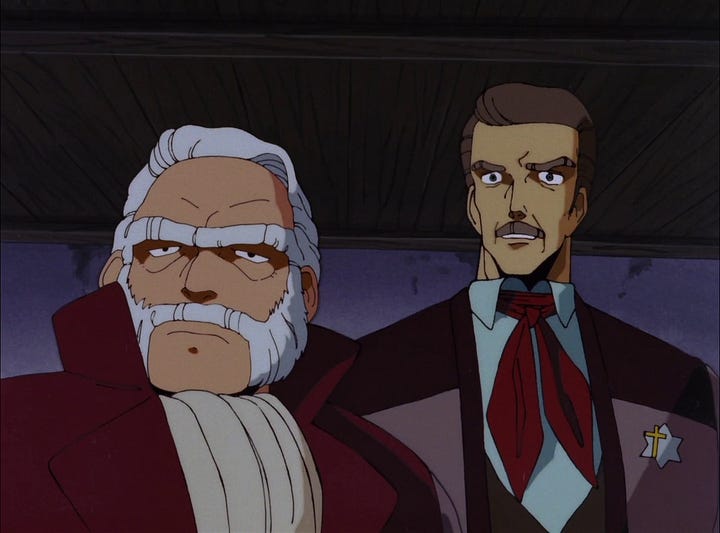
Character Creation
Playable Character Types
Hunters: Specialized warriors who have mastered specific combat techniques and accumulated arcane knowledge to effectively track and eliminate particular supernatural threats, whether vampire aristocrats, werewolf packs, mutant beasts, or extradimensional entities.
Outsiders: Independent survivors who exist outside typical community structures—including nomads, scavengers, explorers, and scholars—whose travels have exposed them to diverse knowledge, unusual perspectives, and survival skills most settled people never develop.
Frontier Dwellers: Ordinary people who maintain civilization's tenuous foothold in a hostile world through their practical skills, providing farming, trade, mechanical repairs, medical care, and protection that keeps their communities alive despite constant supernatural threats. This type would open the game up to gameplay possibilities outside of the superheroic narratives of the original novels and stories.
Nobility Servants: Individuals bound to vampire masters through blood-oaths, fear, or dark bargains, ranging from human thralls whose minds have been broken by the Kiss of Nobility to genetically engineered creatures bred specifically for service to ancient bloodlines. This is another type that would push the door open even wider, not towards narratives of quotidian farmer lives but towards the moral ambiguities that would come with serving the Nobility. Or betraying them.




Origins/Heritage
Human Born on the Frontier: Characters raised in isolated villages or homesteads grew up facing daily dangers that fostered practical skills, deep community bonds, and firsthand knowledge of local monsters, but limited exposure to advanced technology or education beyond their immediate needs.
Human From the Capital: Those who originated in the last great city possess broader education and familiarity with remnants of technological marvels, but their theoretical knowledge often fails them in the unforgiving wilderness where book learning proves less valuable than survival instinct.
Dhampir: Half-vampire, half-human hybrids who inherit supernatural strength, longevity, and heightened senses from their Noble parentage while lacking many vampire weaknesses, yet endure painful isolation as they're distrusted by humans and despised by vampires as traitors.
Mutant: Individuals born with genetic alterations caused by lingering radiation, Noble experiments, or exposure to dimensional rifts, granting them unusual abilities along with distinctive physical traits that mark them as different.
Cyborg: Artificially created beings produced through Noble bioengineering, ranging from nearly human in appearance to distinctly non-human creations, all designed for specific purposes they may now pursue or reject. NOTE: These do not appear in the first novel, but they’re hinted at in the 1985 movie. I have no doubt they make an appearance later in the novel series.

Game Mechanics
Hey, why reinvent the wheel? Let’s pick an existing framework for a rules system that has been tested countless times in recent years. Something that is modern and light, because that’s my personal preference, yet something that can be expanded a little bit and has a free SRD so we can actually use it. Even with those criteria, there are dozens of rulesets to choose from. But for this experiment, let’s choose…. The Year Zero Engine, created by Free League! (NOTE: This article does not constitute the publication of a game using the Year Zero Engine, just a discussion of the framework of a hypothetical roleplaying game).
Dice Resolution Mechanics
Core Roll: Roll a dice pool = Attribute + Skill + Gear (d6s)
Each 6 = 1 success
Most rolls need 1 success
More 6s = better effects specific to the skill tested
No 6s = failure
Pushing the Roll:
Reroll all non-6/non-1 dice
Adds stress, fatigue, or damage, depending on the action
1s on rerolls = negative consequences (injury, panic, gear break, etc., varies by Dice Type)
Dice Types: Each die type has different consequences when 1s are rolled. I’d have to sort that out later.
Base Dice (Attribute)
Skill Dice
Gear Dice
Attributes
There would be four main attributes, and four skills associated with each. Each Attribute would be rated from 1 to 5, and each skill 0 to 5. (So for example, if you are testing the Melee skill, you would add your Vigor rating and your Melee rating, then add Gear and other bonuses. That sum is how many d6s you would roll for that test.)
I also really like the concept of spending or losing these Attribute points temporarily when using special abilities or taking certain kinds of damage. So each Attribute acts not only as a rating for your character, but as point pools that indicate their “health” level. Temporarily lost Attribute points would be regained through rest, restoration technology or perhaps more esoteric means.
VIGOR (represents physical might, endurance, survival)
Melee – Blades, fists, improvised weapons
Endure – Resist poison, pain, exhaustion, cold
Athletics – Jumping, climbing, running, swimming
Survival – Foraging, tracking, hunting, navigating wilds
FINESSE (represents dexterity, speed, precision, stealth)
Ranged – Firearms, crossbows, thrown weapons
Stealth – Sneaking, hiding, moving silently
Tech – Using/fixing pre-collapse tech or cyberware
Sleight – Pickpocketing, lockpicking, fine manual tasks
ACUMEN (represents knowledge, perception, awareness)
Notice – Spotting danger, reading cues, hearing whispers
Lore – Ancient history, Nobility, monsters, ruins
Investigate – Analyze scenes, follow clues, piece info
Esoterica – Occult, psychic, magical rituals or relics
RESOLVE (represents willpower, psyche, presence, inner fire)
Willpower – Resist domination, fear, fatigue, torture
Presence – Commanding aura, intimidation, charisma
Deceive – Lying, bluffing, seducing, impersonating
Focus – Concentrate under duress, activate powers, channel psychic/mutant energy
Special Abilities
Your character would start with a few general Special Abilities. There would also be more specific ones tied to your Character Type and Origin/Heritage. Since we would have core Attributes as spendable point pools, a lot of Special Abilities could be based on spending those points (since they’re scarce and hard to recover). But for now, let’s just put down a first draft of 40 Special Abilities as a baseline:
Combat-Focused
Blood Strike – Deal +1d6 damage to supernatural foes once per scene
Riposte – Once per round, counterattack after a melee miss against you
Ghost Step – +1 to Stealth tests when in shadows
Sharpshooter – Ignore 1d2 points of cover or armor on ranged attacks
Blade Dancer – +1 Finesse with certain light blades
Grapple Enthusiast– At start of round, contested Vigor roll for Initiative bonus
Feral Surge – Choose initiative card on next turn when wounded
Armor Breaker – Melee attacks ignore 1 point of enemy armor
Flurry Shot– Once per round, shoot during someone else’s turn
Savage Lunge – On a melee hit, spend 1 Resolve to strike again immediately
Survival & Utility
Beast Whisperer – Calm or command wild animals with a +1 Resolve check
Wilderness Lore – Always find food, water, or shelter if any exist
Field Medic – +1 to Resolve when trying to stabilize dying ally
Gearhead – Jury-rig any tech with Tech check and 1 spare part
Resourceful – Once per session, declare you “had that all along” (small item)
Relic Sense – Instinctively detect arcane objects or relics nearby
One With the Land – Add Survival stat to Initiative draw when in wild terrain
Quiet Step – Move at full speed while remaining silent
Scavenger – Recover 1 useful item after any encounter
Fast Learner – Gain +1 to any Skill for one scene after failing with it
Social, Mental, & Psychological
Iron Mind – Immune to fear effects unless supernatural
Silver Tongue – Once per scene, re-roll a failed Deceive or Presence check
Nobility Whisperer– +1 to any social test involving a Noble
Cold Reader – Instantly learn a target’s emotional state
Aura of Command – Allies within 10ft get +1 Resolve checks
Uncanny Calm – Never suffer Disadvantage from panic or chaos
Truthsense – Detect lies on a successful contested Presence check
Dark Reputation – Intimidation attempts auto-succeed against commoners
Inspiring Word – Spend 1 Resolve to give an ally +2 to next roll
Dual Identity – Keep a hidden origin or allegiance until revealed
Supernatural Abilities
Night Vision – See perfectly in total darkness
Flesh Mend – Spend 1 Resolve to heal d6 damage
Blood Scent – Track a wounded target over vast distances
Telepathy – Speak silently to anyone in sight
Darkstep – Once per scene, teleport up to 30 ft through shadow
Terrifying Presence – Force a weak-willed foe to freeze or flee
Speed Burst – Once per session, act twice in one round
Entropy Touch – Corrupt a small mundane item on touch once per session
Psychic Shield – Auto-block one psychic or fear effect each session
Backlash – When hit by magic or psionics, deal counterdamage equal to Resolve
Special Mechanics
Special mechanics are the heart of interesting gameplay with most Year Zero Engine games, but I’ll just tackle the most obvious main one that I’d add to this game, vampirism. But we’d call it “Kiss of the Nobility.”
The Kiss of Nobility would be a supernatural level of taint or gift imparted by a vampire noble—either voluntarily accepted, violently forced, or inherited. It woudl grow stronger over time, granting immense power at the cost of free will, empathy, or sanity.
You would gain a Kiss Level (KL) from 0 to maybe 10.
Each level grants powers and corrupts you further.
Gaining KL
Drinking Vampire Blood – Most direct, addictive path to corruption.
Making a Blood Pact – Willful, binding contract with a Noble or their agent.
Using Kiss Powers – Every use invites deeper corruption, even if justified.
Sleeping in a Noble’s Crypt – Soaks your soul in ancient vampiric residue.
Wielding a Noble Relic – Items infused with dark essence slowly claim you.
Betraying a Comrade for Power – Moral collapse triggers instant KL gain.
Channeling Vampiric Energy – Drawing on ambient Noble power warps the self.
Reducing KL
Blood Purge (ritual)
High tech surgery
Oath of Atonement
Blood Exchange
Slay your Siring Noble
Suppressant Drug
Holy Relic
Sacrifice
Ongoing KL Effects (randomly rolled on)
Minor
+1 to one Attribute of choice
Choose 1 Kiss Power (see below)
Beautiful countenance (confers social test bonus)
Disadvantage on social rolls vs humans
Strong urge for blood in moments of stress
Major
+2 Attribute total
Choose 2 Kiss Powers (see below)
Immune to aging and disease
Daily blood requirement (or suffer some kind of penalty)
Must pass Resolve check to disobey your Noble master
Sunlight causes 1d6 damage per round
Max KL
PC becomes an NPC unless GM and player agree to an arrangement!
Kiss Powers
Blood Speed – Choose an Initiative card at the beginning of the first round
Dominate – Issue simple commands to the weak-minded via eye contact
Regenerate – Heal d6 once per round
Misty Form – Evade any physical attack once per session
Shadow Walk – Teleport through shadows once per day
Blood Bind – Touch someone to make them your thrall
Feral Claws – Unarmed attacks deal +1d6, ignore armor
Nightborn Strength – +2 damage when landing an attack in darkness
Vampiric Senses – See heat, hear heartbeats, smell fear
Cost to use KL
Kiss Powers cost Resolve or require a KL check
Push mechanic synergy: You can Push a roll when using your Kiss Power: gain auto-success but somehow risk KL increase
Equipment and Resources
Weapon Mechanics
Weapon Dice: Add 1-3 Gear Dice based on weapon quality and appropriateness
Pushing Weapon Rolls: Pushing a roll with 1s on weapon dice risks weapon damage or malfunction
Special Materials: Weapons crafted from special materials (silver, sacred wood, etc.) provide additional dice against specific creature types
Energy Weapons: More powerful but risk overheating; each 1 rolled decreases energy reserve



Protection Mechanics
Armor Rating: Reduces damage taken (1-5 points)
Mobility Penalty: Heavier armors impose penalties on Finesse skills
Special Protections: Certain items provide immunity or resistance to specific threats (vampire hypnosis, werewolf infection)
Pushing Protection Rolls: Pushing a roll with armor dice risks temporary armor degradation
Tool Mechanics
Gear Dice: Add 1-2 Gear Dice when using appropriate tools for a task
Consumables: Some tools provide one-time benefits (antidotes, healing supplies)
Maintenance: Tools require regular upkeep or risk failure at critical moments
Jury-rigging: Skilled characters can temporarily repurpose tools for emergency use
Technology Mechanics
Tech Complexity: Rated 1-5, determines difficulty of operation and repair
Malfunction Risk: Ancient tech may fail unpredictably (1s on tech dice)
Noble Lock: Some devices respond only to vampire biological signatures
Integration Potential: Characters with tech skills can combine or modify devices
Currency
Dalas: remarkably, everyone’s using the same kind of money!
Reputation System: Successful jobs increase a character’s reputation, allowing for higher fees, lower sales prices, increased chances at social interaction success, etc.
Blood Debts: Favors could be tracked as a resource and called in at critical moments
Resource Management (Hard Mode): Between adventures, characters would be required to manage upkeep costs for equipment and living expenses

Monster and NPC Design
Nobles (Vampire Lords)
Power Levels: Determines Blood Points (a point pool exclusive to Noble NPCs), & other things
Psychology: Motivation, personality traits, and goals
Special Abilities: Unique powers based on bloodline and age. They have to expend Blood Points to use their powers
Weaknesses: Traditional and unique vulnerabilities (important for keeping combat from getting boring, and could be used as a reward for good investigative roleplay) Each Noble could have 1-3 weaknesses that can be exploited. Exploiting psychological weaknesses can:
Force the Noble to waste Blood Points
Create opportunities for escape or tactical advantage
Potentially turn a combat encounter into a social one
Nobility-Created Monsters
Spirits and Demons
While the Nobility created most Frontier monsters through scientific means, they also mastered techniques for summoning, binding, and modifying supernatural entities from other dimensions or planes of existence. These beings range from relatively minor spirits bound to specific locations or objects to powerful demons capable of devastating entire regions. Some were imprisoned in containment devices that have since deteriorated, while others were integrated into Noble architecture or technology, awakening when disturbed by unwary travelers or treasure hunters.
Mechanics:
Partially or completely incorporeal (physical attacks may be ineffective)
Unique weaknesses based on their type and origin (specific materials, rituals, or frequencies)
Esoterica checks could reveal potential vulnerabilities
Most would possess reality-altering powers limited to specific domains
Binding circles or specialized tech can contain them temporarily
Many would follow complex rules or compulsions that clever hunters can exploit
Spiritual energy could be detected by dhampirs and those with the Sensitivity skill
Lycanthropes
Lycanthropes are genetic hybrids engineered by the Nobility to serve as elite guards, hunters, and trackers, combining human intelligence with bestial strength and predatory instinct. Werewolves represent the most common variety, but Noble scientists created numerous specialized variants: were-tigers for jungle environments, were-bears for mountain terrain, and rarer types like were-hawks for aerial reconnaissance. In modern times, many lycanthrope bloodlines have escaped Noble control and established independent packs in wilderness areas, passing their condition through both infection and hereditary transmission.
Mechanics:
Shape-shifting between human, hybrid, and beast forms (each with different stats)
Regeneration (heal 1d6 damage per round unless wounded by silver)
Enhanced senses would provide +2 dice on all Notice checks
Silver weapons could deal double damage and prevent regeneration
Transformation triggered by stress, moonlight, or bloodshed (Resolve check to resist)
Most lycanthropes retain human intelligence but struggle with bestial rage
Synthetic Creatures
Synthetic creatures represent the pinnacle of Noble bioengineering, purpose-built servants constructed from organic material fused with mechanical components and necromantic energy. Golems serve as tireless guardians imbued with programmed intelligence, zombies function as disposable labor animated by viral compounds, and more sophisticated creations like ecto-shells combine human tissue with ectoplasmic essence to create infiltrators who can pass as human. These creatures continue to operate long after their creators have fallen, following their final instructions with unwavering, if sometimes corrupted, devotion.
Mechanics:
Various immunities
Most require no sustenance and function continuously
Each synthetic could have a "command phrase" that overrides programming
Mechanical components vulnerable to electrical attacks or tech disruption
Mutants
Mutants emerged through a combination of lingering radiation from the nuclear holocaust, Noble genetic experimentation, and exposure to reality-warping energies released during vampire wars. Some mutant lineages developed naturally over generations of environmental adaptation, while others resulted from direct Noble tinkering with human genetic code to create specialized servant races. Common variants include giant-breeds with extraordinary strength, multi-limbed chimeras combining features of different species, and psionically gifted strains with developing mental powers.
Mechanics:
Unique physiological advantages (+2 to one Attribute based on mutation type)
1d3 beneficial and 1d3 detrimental mutations (powerful but also suffering/flawed)
Environmental adaptations (flying, water breathing, etc)


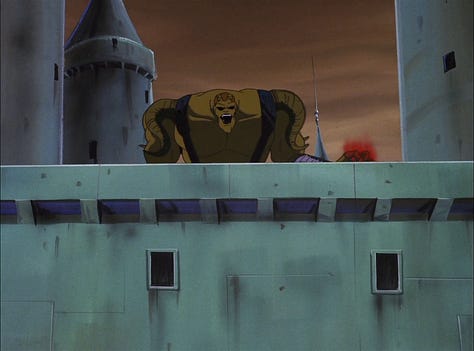
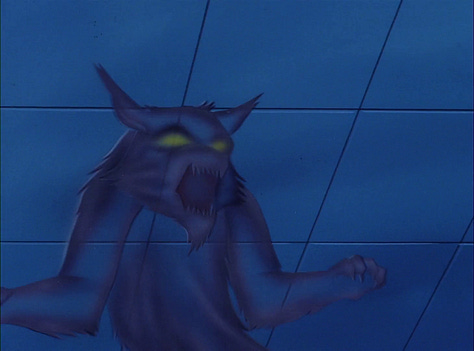


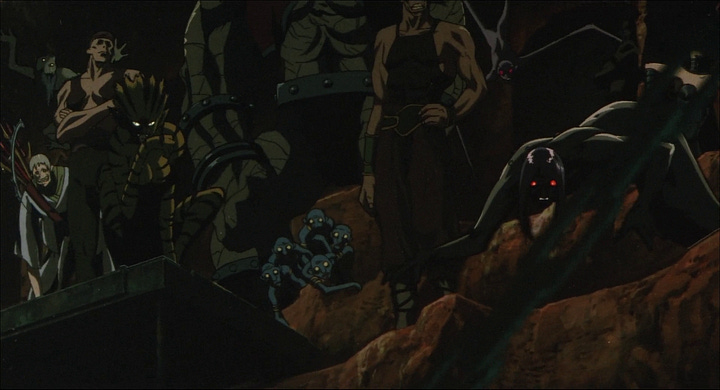
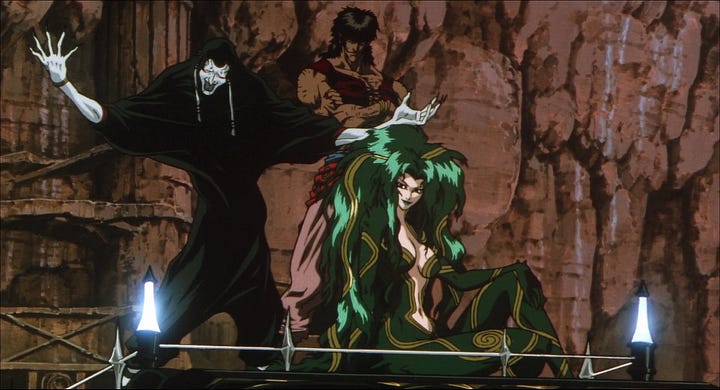
Adventure Design
The Vampire Hunter D novels, so far as I’ve read them, explore a handful of different narrative types, but I have about 51 more novels to go so I’m sure there are more adventure archetypes to be had in this universe. Here are the four main ones I would describe in a GM section of the rulebook, along with location and reward archetypes:
Adventure Frameworks
The Hunt adventure revolves around hunters tracking and eliminating a specific supernatural threat, often requiring research to discover weaknesses, tracking skills to locate the prey, and carefully calibrated combat tactics to execute the final confrontation without civilian casualties or collateral damage.
The Mystery centers on characters investigating unexplained phenomena, disappearances, or strange occurrences in a community or ancient ruin, piecing together clues through interviews, research, and exploration until they uncover hidden truths that inevitably lead to confrontations with the responsible entities.
The Journey focuses on the perilous travel between destinations across the hostile Frontier, where characters must navigate treacherous terrain, survive environmental hazards, avoid territorial predators, and potentially deal with unwelcome encounters at shelter points along their route.
The Defense puts characters in the position of protecting vulnerable people or locations from imminent supernatural attack, requiring them to fortify defenses, train locals, set traps, and ultimately stand their ground against overwhelming forces in climactic last stands.
Locations
Frontier Villages serve as both safe havens and adventure hubs, each with distinct architecture adapted to local threats, unique economic activities based on available resources, complex social dynamics shaped by isolation, and specific supernatural problems requiring Hunter intervention.
Nobility Ruins provide the most dangerous and rewarding exploration sites, from crumbling mountain castles with still-functioning defense systems to abandoned research facilities housing forgotten experiments, each containing valuable artifacts, dangerous guardians, and dark secrets about the vampire civilization.
Wilderness Areas present natural and unnatural hazards across diverse environments—from forests harboring predatory plant-animal hybrids to mountains where gravity itself becomes unreliable due to dimensional instabilities to deserts where hallucination-inducing spores test the sanity of travelers.
Underground Complexes offer claustrophobic adventure settings beneath the earth's surface, including ancient Noble bunkers containing preserved technology, natural cave systems repurposed by mutant communities, and sprawling subterranean transportation networks connecting distant Noble territories.


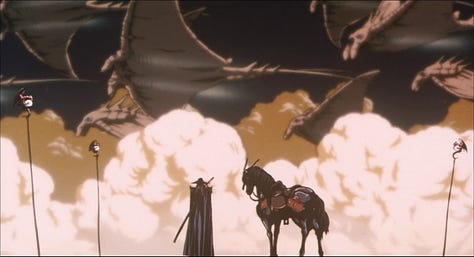
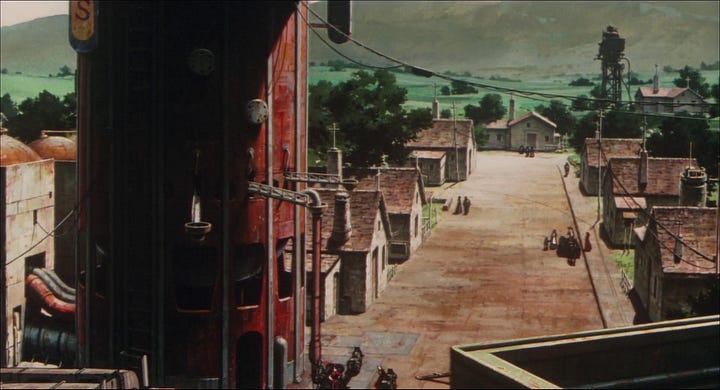

Rewards
Payment would come primarily in the form of dalas (the standard currency issued by the Capital), though frontier communities may offer alternative compensation like land grants, resource rights, or long-term protection agreements based on their available resources.
Equipment rewards would include unique weapons tailored to specific supernatural threats, ancient Noble technology with mysterious functions, protective gear enhanced with specialized materials, and tools that expand character capabilities in future adventures through the use of added Gear Dice on related checks.
Information would serve as a crucial reward type encompassing newly discovered weaknesses of supernatural creatures, locations of valuable ruins or hidden settlements, identities of disguised Nobility agents, and fragments of forgotten technological or magical knowledge.
Reputation points would grow through successful missions and honorable conduct, manifesting as increased payment rates, preferential treatment in settlements, access to restricted information networks, and the fearful respect of supernatural entities who learn to avoid confrontation.
Abilities would represent the most personal form of character advancement, from new combat techniques learned from veteran Hunters to psychic talents awakening after exposure to Noble artifacts to cybernetic enhancements installed by recovered medical systems to ritual knowledge passed down by grateful village elders.
Themes and Atmosphere
Central Themes
Light vs. Darkness would manifest throughout the game both literally, in the day/night cycle that determines when vampires can hunt and humans can safely travel, and metaphorically in the moral choices characters face when deciding how far to embrace supernatural power at the cost of their humanity.
Decline of Civilization would pervade the setting as players encounter the fading remnants of once-mighty cultures: vampire castles crumbling into ruins, forgotten technologies failing without maintenance, and human settlements struggling to preserve knowledge that diminishes with each generation.
Beauty and Horror would coexist in stark juxtaposition throughout the game, from the ethereal beauty of vampiric nobles capable of unspeakable cruelty to the breathtaking landscapes marred by mutated predators to the elegant artifacts of Noble civilization that often conceal terrifying functions.
Transience would haunt both human and non-human characters as they confront the impermanence of existence in different ways: humans through their brief lives in a dangerous world, Nobles through their fading civilization despite millennia of supposed immortality; dhampirs through their liminal existence between both realms.
Isolation would define the Frontier experience where vast distances separate settlements, communication remains primitive despite advanced technology in other areas, and characters, especially hunters and outsiders, struggle with profound loneliness as they navigate societies where they never truly belong.
Tone and Mood
A good GM section would have a list of words, phrases and short descriptive sentences to pull from anytime the tone and mood of the game needs reinforcing. Those tones and moods would be the following:
Gothic Horror would permeate the game through classic vampire fiction elements—ancient castles looming on distant hills, aristocratic predators with refined tastes, forbidden knowledge with terrible costs, and an omnipresent sense of the supernatural lurking just beyond normal perception.
Post-Apocalyptic Struggle would underpin every aspect of frontier life as communities battle resource scarcity, technological regression, mutated threats born from ancient catastrophes, and the harsh reality that civilization's comforts are distant memories preserved only in crumbling ruins.
Adventure would drive the narrative forward through heroic journeys across breathtaking landscapes, discovery of long-lost secrets and technology, daring rescues against impossible odds, and the promise that skill and courage can overcome even the most terrifying supernatural threats.
Melancholy would color the world in subtle shades of loss and resignation—in the fading glory of Noble architecture, the bittersweet beauty of a sunset over ruined cities, the knowledge that even the mightiest civilizations eventually crumble, and the quiet dignity of those who continue to fight despite understanding the ultimate futility of their struggle.

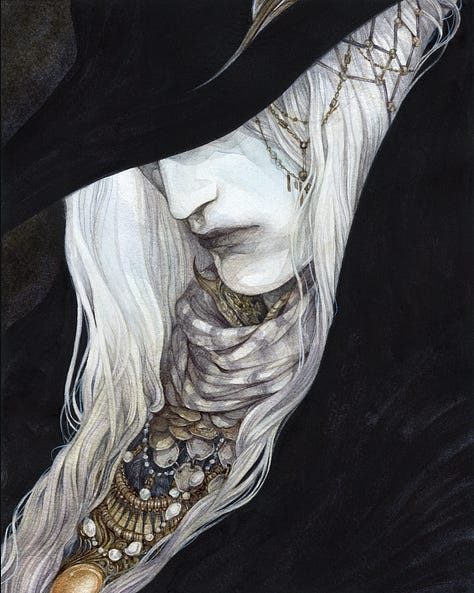

GM Tools
Noble Creation Guide
Castle Design
This section would provide GMs with frameworks for creating memorable Noble strongholds that serve as both gothic adventure locations and expressions of their Noble inhabitants' personalities.
Templates for different architectural styles based on Noble age and bloodline
Integration guides for combining medieval aesthetics with futuristic technology
Defensive system options with mechanical effects
Room generation tables tied to Noble psychology and interests
Power Selection
This would help GMs balance Noble antagonists by providing thematically appropriate abilities that challenge players without overwhelming them.
Power frameworks organized by Noble rank and bloodline
Combination suggestions that create memorable signature abilities
Cost and limitation mechanics to ensure dramatic but fair encounters
Progressive power manifestations for recurring villains
Motivation Tables
Motivation Creation assists GMs in developing complex, believable goals for Noble antagonists that drive campaign narratives and provide moral complexity beyond simplistic vampire stereotypes.
Motivation tables tied to vampire psychology and historical eras
Connection frameworks linking Noble goals to PC backgrounds
Evolution systems for how motivations change after defeats or victories
Guidance for creating moral ambiguity and potential alliance opportunities
Servant Generator
These would be tables for populating Noble domains with appropriate minions that extend the vampire's influence while reflecting their personality and needs.
Servant templates ranging from mindless thralls to trusted lieutenants
Loyalty mechanics determining responses to hunter interrogation or infiltration
Connection mapping showing household power dynamics
Progressive challenge scaling for domain infiltration
Advanced Rules
Ancient Technology
Technology plays a big role in the earlier novels, not necessarily as the center of the plotlines, but with its constant presence. It’s one of the ways that Kikuchi reinforces the exotic theme of dying earth gothic horror scifi. This game would have optional rules for providing players with lots of fun, advanced weapons and gear.
Gear Dice Application: Characters could add Tech-focused Gear Dice from tools like scanner devices, Noble technical manuals, or components from similar technology
Knowledge Barriers: Understanding discovered technology would require successful Lore or Tech checks, with difficulty based on the device's complexity (1-5 scale)
Research Value: Even incomprehensible technology can be sold to researchers and other interested parties, with value based on Complexity × Rarity
Repair Systems
Fixing broken ancient machines presents unique challenges, as the original manufacturing techniques have been lost and compatible components are extremely rare.
Repair Difficulty: Based on Complexity rating + Damage level, requiring Tech checks with appropriate Gear Dice
Component Substitution: Missing parts could be replaced with improvised alternatives by Pushing a repair roll, but increases risk of malfunction
Repair Specialization: Characters could acquire expertise in specific technology types (computational, weapons, medical, etc.), gaining +2 dice on related repair checks
Consequences
Noble and ancient technology would often produce unforeseen effects when activated, from minor power fluctuations to catastrophic reality distortions that can fundamentally alter an adventure.
Malfunction Table: When Gear Dice show 1s on technology-related checks, GMs could roll on a Malfunction Table with effects ranging from temporary power loss to dimensional rifts
Side Effects: Many Noble devices might function perfectly but produce unintended consequences—medical devices that heal wounds but alter DNA, power sources that generate energy but attract supernatural entities
Corruption Risk: Technology interfacing directly with users (neural links, cybernetic enhancements) could increase Kiss Level in certain circumstances when Pushed beyond normal limits
Vampire Politics
Noble Houses
Vampire families would operate in the background as intricate political entities, with bloodlines serving as the primary source of status and power. Each house would maintain hierarchies and external relationships through blood alliances, strategic marriages, and carefully negotiated political maneuvers that could span centuries.
Bloodline Rating: GMs track a House’s political influence on a 1-10 scale
Blood Debt System: PCs could call in favors or accumulate… obligations
House Abilities: Blood Debt thresholds could unlock exclusive Abilities
Territory Rules
Nobles establish domains through a combination of historical claim, supernatural might, and intricate diplomatic negotiations. Territories are fiercely protected, with clear boundaries marked by supernatural markers, blood oaths, and an unwritten code of conduct that governs interactions between different vampire rulers.
Domain Control: A map-based resource system for territorial influence
Boundary Conflict Resolution: Specialized combat and negotiation mechanics for territorial disputes. Nothing too complex, maybe 1-3 rolls of the dice.
Supernatural Marking: Ritual mechanics to establish and defend territorial claims
Feeding Rights: Resource management tied to controlled territories
Connection to Sacred Ancestor
The legendary progenitor of vampires, Dracula himself, represents the ultimate source of power and legitimacy in vampire society. Noble houses would compete ruthlessly to either prove or fabricate closer connections to this near-mythical being, with claimed lineage serving as the highest form of political and social currency among the undead aristocracy.
Ancestral Resonance: A mystical connection stat that grows through specific quests and rituals
Bloodline Quests: Unique missions to uncover or fabricate connections to the Sacred Ancestor
Bloodline Powers: Special abilities that unlock with increased ancestral connection
Appendices
Lexicon
The first few novels do not establish a great deal of special terms and vernacular, but this would be a great opportunity to puts some roots down and establish a deeper connection between GM/players and the setting. The most important part of this section would be to make sure each term sounds authentic and faithful to the original material.
Nobility Terms
A rich linguistic tapestry that captures the gothic and scientific blend of vampire culture, including terms that reflect their ancient lineage and technological prowess. E.g.:
"bloodkin" for close vampire relatives,
“chrono-bloods" for vampires of extreme age who can manipulate time-like abilities
"flesh-weavers" for vampire scientists who practice bio-engineering
"night-sovereign" as a respectful term for a particularly powerful vampire lord with significant territorial control.
Ancient Customs and Traditions
Linguistic markers that reveal the depth of vampire social interactions, such as:
"the Crimson Covenant" - a sacred agreement between vampire houses that cannot be broken without extreme consequences
"blood-memory" - a ritual of ancestral knowledge transfer
"the Twilight Communion" - a periodic gathering of Noble houses to resolve conflicts and maintain political balance
"shadow-binding" - a complex social ritual of mutual protection and obligation
Formal Titles and Forms of Address
A hierarchical system of address that would reflect the intricate social stratification of vampire society:
"Luminous Majesty" for the highest-ranking vampire nobles
"Crimson Patriarch/Matriarch" for house leaders
"Dusk-Born" for younger vampires
"Shadow Counselor" for political advisors
"Twilight Heir" for designated successors of a Noble house
Frontier Bestiary
The world of Vampire Hunter D presents an extraordinary wealth of monsters, beasts and supernatural foes unmatched in most fictional settings. While the Nobility and their direct servants represent the most obvious antagonists, the Frontier teems with countless other threats—some created deliberately through vampire bioengineering, others emerging naturally from radiation and dimensional instabilities, and many representing the twisted remnants of Noble experiments abandoned to evolve on their own over millennia.
Each monster entry would include the basics for a GM. For example:
Midwich Medusas: Amphibious entities that combine aspects of aquatic predators with hypnotic powers, typically dwelling in subterranean waterways beneath Noble ruins.
Attributes: Vigor 4, Finesse 2, Acumen 4, Resolve 6
Special Abilities: Pleasure enthrallment (victims must succeed on Willpower check or become willing victims), Constricting hair tendrils (2d6 damage per round)
Weakness: Cannot maintain hypnotic control if target experiences sudden pain
Hunting Tactics: Lure victims with illusory beauty, then drain their life force through physical pleasure that masks their deadly feeding
Hunter Notes: Never hunt Medusas alone; companions should carry pain-inducing stimulants to break entrancement
Technology Catalog
Common Weapons
Much like the variety of creatures to fight on the Frontier, the sheer variety of weaponry found in the stories is vast. Some of the most notable ones just from the first novel (and 1985 anime film that retells the story) paint a perfect picture of VHD’s unique genre-mixing nature:
Longswords
Whips
Laser Rifles
Specialized Stakes
Common Gear
Kits are a great way in RPGs to forego itemized and catalogued inventories on a character sheet. Here are a few examples of kits that a character could start out with:
Hunter Kit - Specialized equipment collections containing silver powder, UV lamps, holy symbols, and specialized tools; provide 2 Gear Dice for monster identification and tracking.
Survival Pack - Essential wilderness equipment including weather-resistant shelters, water purifiers, and emergency rations; add 1 Gear Die to all Survival checks.
Medical Kit - Field kits containing both conventional treatments and specialized remedies for supernatural afflictions; provide 1-2 Gear Dice for treating wounds and counteracting vampire infections if used within 24 hours of exposure.
Communication Kit- Short-range radios, signal flares, and message capsules for trained birds; unreliable in areas with dimensional disturbances or Noble interference but essential for coordinated hunting parties.
Ancient Technology
Each technological item would include repair requirements (specific components, skill checks), operational limitations (power requirements, side effects), and gameplay mechanics that integrate with the Year Zero Engine's dice system. Ancient technologies should always present risk-reward decisions—offering tremendous power at the potential cost of consequences on the welfare of the PC. Some examples of powerful ancient tech might include:
Weather Controller Interfaces
Nobility Medical Chambers
Dimensional Stabilizers
Cyborg Enhancement Systems
AI Companion Units
Adventure Sites of the Frontier
In keeping with the Year Zero Engine tradition of "mystery sites," the Vampire Hunter D TTRPG would include detailed adventure locations that players could explore in any order, gradually uncovering the site's story through investigation and interaction. Each location would have multiple points of interest, NPC details, potential encounters, and secrets that create a coherent narrative regardless of exploration sequence. Each site would include encounter tables, NPC motivations, and linking clues that tie to broader campaign arcs, allowing GMs to use them as standalone adventures or connected narrative elements within a larger storyline.
Here is an overview of an example site, a typical Noble Stronghold:
Castle Chaythe
Theme: Decaying grandeur of a once-great Noble house
Points of Interest:
Great Drawbridge - Ancient stone bridge with integrated force field and identity recognition system
Entrance Hall - Gallery of portraits chronicling the Chaythe family history
Audience Chamber - Throne room where the Noble once received human tributes
Laboratory - Abandoned experiments in various stages of completion/escape
Library - Collection of forbidden knowledge and dimensional research
Solar Observatory - Used to track celestial movements important to Noble rituals
Noble's Resting Chamber - Heavily protected crypt with supernatural defenses
Servant Quarters - Now occupied by synthetic guardians and remaining human thralls
Hidden Spaceport - Launchpad for the rumored "City of the Night" escape vessel (oh yeah, did I mention this setting has spaceships and interplanetary stuff? That would be for a whole separate expansion)
Power Core - Ancient reactor providing energy to castle systems through mystical conduits
Site Secrets: Prison containing forgotten Noble rival, dimension-ripping relic, self-aware AI system
Other site archetypes might include:
Sample Frontier Settlement
Wilderness Hazard Zone
Ancient Noble Hunting Ground
Weather Controller Station
Frontier Trading Post
Abandoned underground lab complex
Some Final Thoughts on the System
I won’t delude myself into thinking that the Year Zero Engine is the perfect fit for the Vampire Hunter D universe and its style of story. As with any ruleset, there would be some easily identifiable pros and cons if you know what you’re looking for.
Pros of the Year Zero Engine
Dice Pool Mechanics: The Year Zero Engine's core mechanic of building dice pools from Attributes + Skills + Gear is straightfoward and easy to learn. The system rewards character specialization while keeping outcomes uncertain, all without bogging down skill checks and combat with endless modifiers.
Push Mechanics: The ability to "push" rolls by accepting consequences mirrors the desperation of Frontier survival. It naturally supports the novels' recurring theme of power at a cost, and generally of risktaking at almost every turn.
Gear Focus: YZE's emphasis on equipment as a significant contributor to success rates reflects the importance of specialized tools in the novels, where having the right weapon or protective item often makes the difference between life and grisly death.
Stress/Corruption Systems: The existing framework for tracking psychological or supernatural corruption (in games like Forbidden Lands and ALIEN) provides a fertlie foundation for implementing the Kiss of Nobility mechanic, modeling the slippery slope of vampire taint central to the series. Further development could lead to other point pools of the same nature that track other accumulative counters for a PC.
Narrative-Driven: The system encourages description-rich gameplay by keeping mechanics relatively light, allowing the gothic horror atmosphere and melancholic beauty of the setting to remain front and center during play. This still requires participants who can use descriptive language, have vivid imaginations and who have watched and read VHD media prior to playing, but at least the rules won’t get in their way.
Cons of the Year Zero Engine
Power Scale Limitations: The Year Zero Engine typically models relatively grounded characters, while Vampire Hunter D features protagonists and antagonists of extraordinary power. You certainly can grow powerful in a YZE game, but it’s not exactly elegantly. What I’ve witnessed of extreme high-”level” YZE play is players with huge stacks of special abilities to choose from, and the once-light rules system clearly became a slog, especially in combat.
Combat Complexity: YZE combat tends toward simplicity, which might struggle to capture the intricate, balletic combat sequences described in the novels where combatants use highly specialized techniques and supernatural abilities in tactically complex ways.
Technological Range: The system doesn't inherently support the vast technological spectrum present in the setting, from medieval weaponry to reality-warping Noble devices, requiring substantial expansion of the equipment rules. At least not by default. A game designer would want to put special care into creating interesting little rule exceptions for specialized weapons and equipment.
Gothic Atmosphere: While YZE can handle horror (as shown in ALIEN), its mechanical approach might not inherently evoke the distinctive gothic romance and beauty-in-darkness aesthetic that makes Vampire Hunter D unique among post-apocalyptic settings. This, like the balletic combat, would be largely up to the GM and players to conjure up descriptively. And importantly it would also be communicated in the licensed artwork that would lavishly adorn every page of the rulebooks.
Could you play as D?
The answer is fraught with considerations, but generally, no. A neophyte to the TTRPG genre might think it like a video game: if it says “Vampire Hunter D” in the title, and the previous media has been about this character of the same name, why can’t I jump into this game as D? The answer is threefold:
Too Powerful: First, D is an extraordinarily powerful character with abilities that would unbalance any reasonable game system. His combat prowess, regenerative capabilities, resistance to vampire powers, and centuries of experience place him far beyond the starting capabilities of player characters. Attempting to represent his abilities within the Year Zero Engine's framework would either require breaking the system's numerical boundaries or significantly weakening him compared to his depiction in the novels.
Too Established: D's character is already defined through decades of established canon. He has specific abilities, personality traits, and a mysterious past that drives his actions. This leaves little room for the player agency and character development that form the core of roleplaying games. True roleplaying involves making meaningful choices that shape your character's growth and the story's direction—playing as an established character with predetermined motivations restricts this essential freedom.
Fun to be had Otherwise: The novels demonstrate that the world of Vampire Hunter D is filled with fascinating characters beyond its titular protagonist. The series showcases diverse human survivors, conflicted dhampirs, complex Noble antagonists, and mutant companions—all of whom provide more fertile ground for roleplaying. By creating your own character, you could explore personal connections to the setting's rich history and forge your own legend in the Frontier's dangerous landscape.
The Game That Will Probably Never Be
It’s admittedly a very fun exercise to plug a beloved setting into a rules framework, especially when using a relatively simple ruleset like the Year Zero Engine. But ultimately a game is only as good as the number of people playing it, and the only way to get people to play a game en masse is to present it nicely with playtested design, evocative artwork, professional layout and aggressive, shrewd marketing.
So how would a Vampire Hunter D RPG get made? First and foremost would be navigating the labyrinthine licensing landscape. The Vampire Hunter D property involves a potentially complex web of stakeholders, as noted in the intro above. One or more of those entities would need to sign off, negotiate terms, and potentially collaborate on a licensing agreement that could take a long time to finalize.
Beyond licensing, creating a successful RPG would require finding the right publisher with both the creative vision and marketing muscle to do justice to the source material. This would mean finding a publisher with experience in both anime-inspired properties and tabletop RPGs—a relatively small subset of the gaming industry. The project would need an art director who could capture the soul of the VHD aesthetic while creating a cohesive visual language for the game, likely requiring a significant budget for original artwork.
Marketing would be crucial. While Vampire Hunter D has a devoted cult following, it remains a niche property outside of anime and manga circles. The RPG would need to appeal not just to existing fans, but to a broader audience of roleplaying gamers interested in a unique, genre-blended setting. This might involve strategic partnerships with anime conventions, RPG forums, and targeted marketing that highlights the game's unique blend of gothic horror, science fiction, and dying earth frontier adventure.
Crazier things have happened, I suppose. Let me know your thoughts on Vampire Hunter D in general and your thoughts on the prospect of a fully illustrated, faithfully forged RPG using that IP.
Vampire Hunter D Fan Links
Here’s the story here: some folks at a small movie production company secured the rights to create a graphic novel and subsequent comic book series based on Vampire Hunter D stories. They kickstarted both of those projects, and as an offshoot of that crowdfunding experience, created a Discord server where they could communicate with backers and generally have a place for VHD fans to congregate. Another offshoot of their crowdfund was an official podcast, which they record as video and post on YouTube as well. The hosts are very well-informed entertainment industry professionals and their insights on Vampire Hunter D are second to none:
Vampire Hunter D Official Podcast on YouTube
Vampire Hunter D Fan Community Discord
Vampire Hunter D Novel Omnibuses
Below are affiliate Amazon links that support the newsletter at no additional cost to you. Buying these books new is one of the very few ways to also lend your support to the VHD franchise and goes towards the creation one day of new VHD media.
FYI, these are each 550+ page paperback books:
Vampire Hunter D Omnibus: Book One (contains novels 1-3)
Vampire Hunter D Omnibus: Book Two (contains novels 4-6)
Vampire Hunter D Omnibus: Book Three (contains novels 7-9)
Vampire Hunter D Omnibus: Book Four (contains novels 10-12)
Vampire Hunter D Omnibus: Book Five (contains novels 13-15)
Vampire Hunter D Omnibus: Book Six (contains novels 16-18)
Vampire Hunter D Omnibus: Book Seven (contains novels 19-21)
Vampire Hunter D Omnibus: Book Eight (contains novels 22-24)(releases May 27, 2025)
Vampire Hunter D Omnibus: Book Nine (contains novels 25-27)(releases September 23, 2025)
The images used in this article are the property of their respective copyright holders, including but not limited to Hideyuki Kikuchi, Yoshitaka Amano and other rights holders. These images are displayed solely for educational and critical analysis purposes under Fair Use provisions of copyright law.




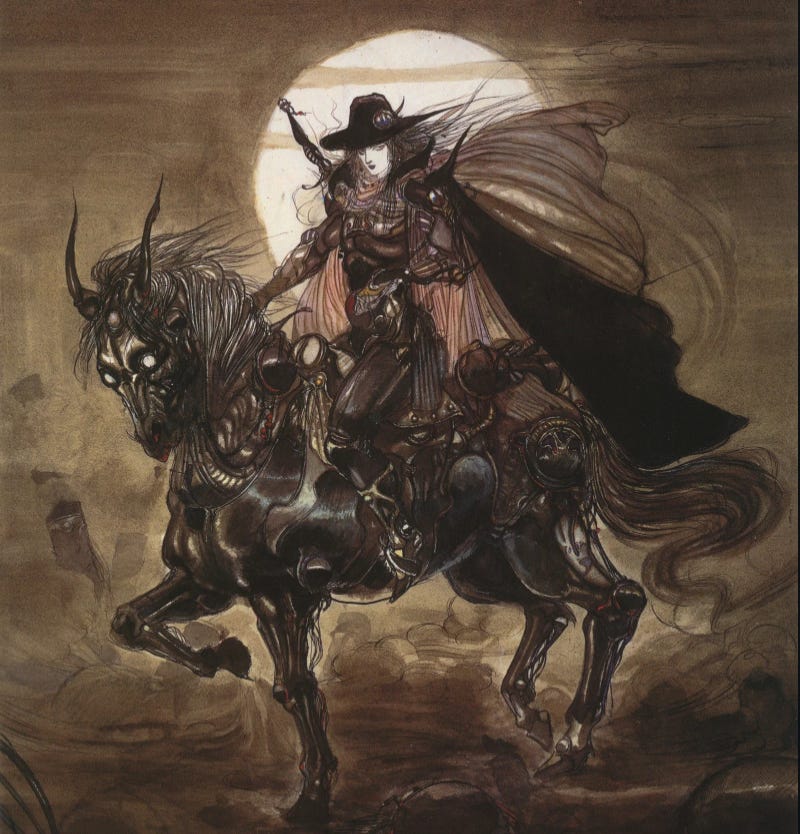




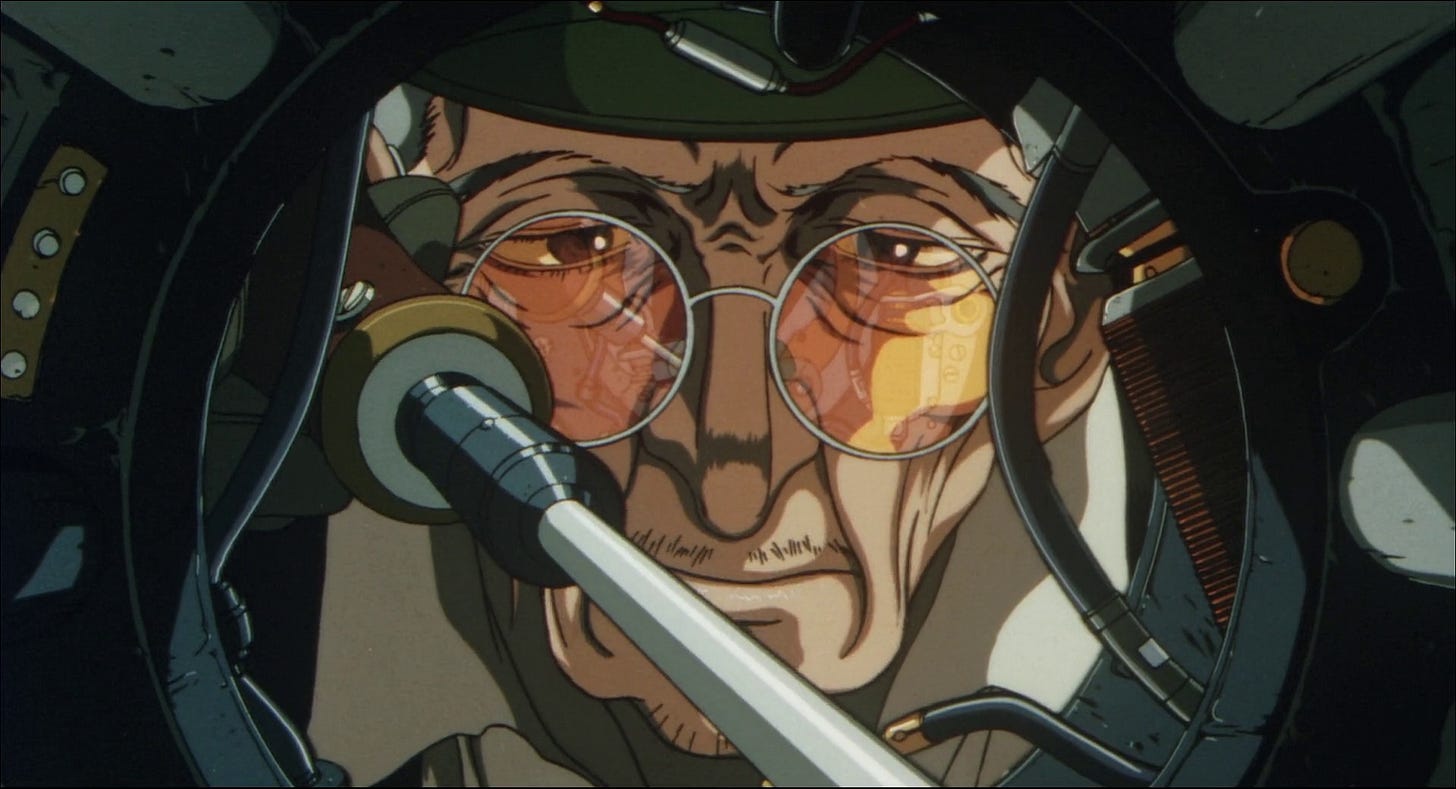
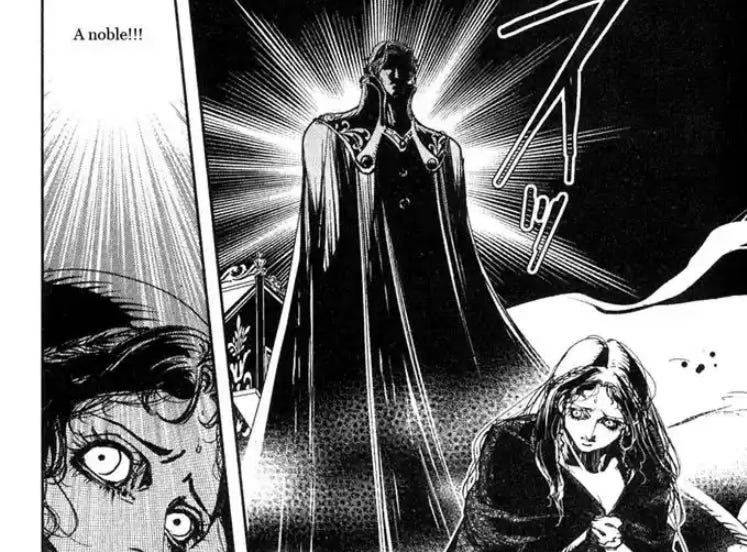

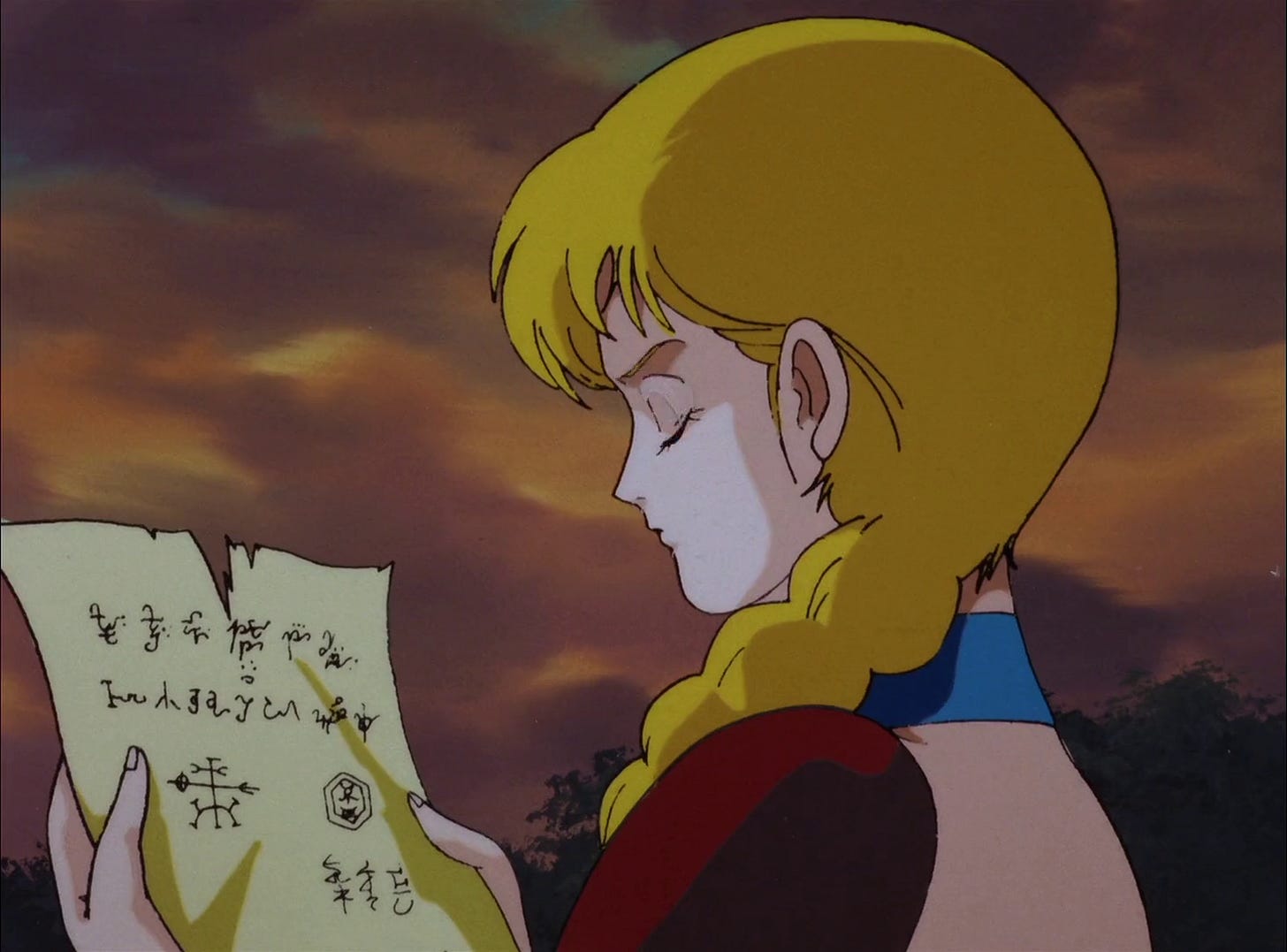

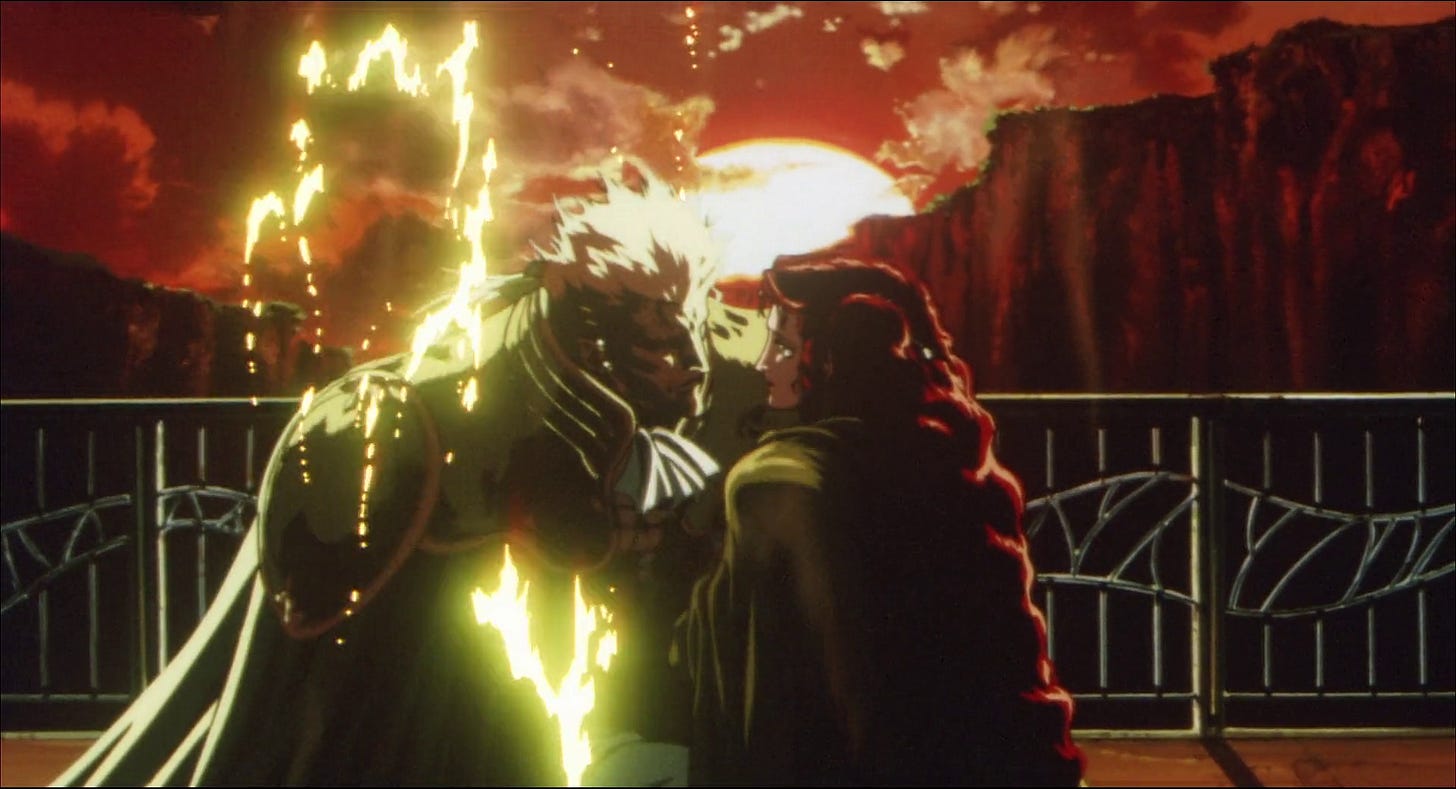

There's a supplement for Pathfinder 1e called "World of Vampire Hunter D", which kinda adapts the material for Pathfinder. Worth checking out. Cheers!
You have done most of the hard work. It wouldn't take much to turn this into an underground, unauthorized zine. Great job! I would purchase this.